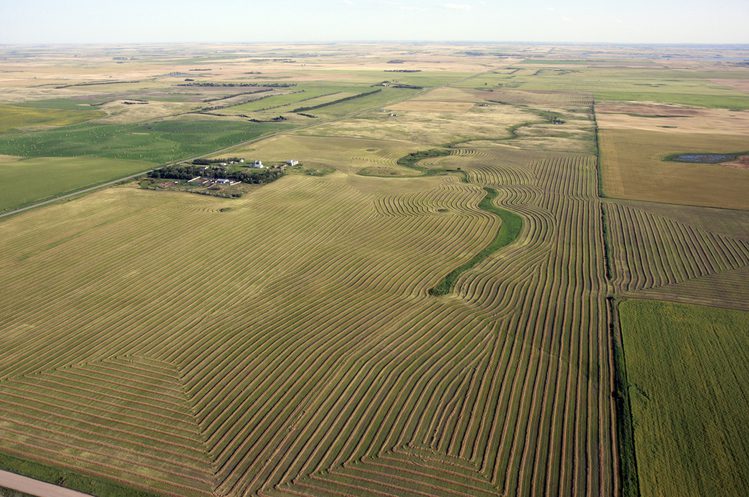

The Summit Carbon Solutions (SCS) carbon capture utilization and storage (CCUS) project, slated to create 2000 miles of pipeline, is projected to cost $4.5 billion. With so much opposition from landowners and environmentalists, some may be surprised at how quickly the project is projected to move forward.
Vice President of Governmental Affairs at SCS Jake Ketsner said he anticipates that it will get all the needed permits and easement contracts across five states finalized by the end of 2022.
One reason for the quick permitting process may be the level of state and federal governments' tax money invested in the pipeline.
There is significant North Dakota taxpayer investment in this multi-state project. During the legislative hearings in 2021, left-leaning environmental groups joined with conservative taxpayer groups to oppose the tens of millions that the state plans to spend on CCUS projects.
Managing Director of North Dakota Watchdog Network Dustin Gawrylow said that in 2019 and 2021 the North Dakota State Legislature passed a cluster of bills intended to prop up the coal and oil industry. One such bill passed in 2021 is SB2052 which exempts SCS and other CO2 pipelines from paying sales tax on any construction supplies. Gawrylow estimates this exemption will amount to $1 million.
But that's just the beginning. Legislators passed HB1452, a bill that creates a new government agency, the Clean Renewable Energy Authority (CREA). CREA acts under the auspices of the North Dakota Industrial Commission to disperse grants and low-interest loans that promote green energy projects like the proposed SCS pipeline. In fact, Governor Doug Burgum stated that he has encouraged SCS to apply for funding from CREA, and he expects that it will be awarded taxpayer money for this project.
Forty million dollars of the funding for CREA comes from the Legacy Fund. This is especially troubling to critics such as Bob Harms. Harms was one of the architects of the Legacy Fund and legal counsel to former Governor Ed Schafer. As he explains, the Legacy Fund was created to “replace oil revenues when they decline.” He says that if the priority is the long-term fiscal health of the state, this use of the Legacy Fund earnings is not sustainable.
“This fund was created to do what I said: when oil revenues go down this fund should be there, and its earnings should replace the declining [oil] revenue stream... I think we should use the Legacy Fund wisely, but I'm also concerned about the state's financial condition ten years from now,” Harms said in a television interview earlier last year.
The Institute for Energy Economics and Financial Analysis (IEEFA) reports the same underperformance in carbon capture projects around the world. According to IEEFA, every carbon capture program, whether for coal, gas, or ethanol, has failed to meet its performance goals.
However, proponents say that this fledgling industry is so promising that if government support gets it past its infancy, it will yield huge environmental as well as economic returns.
That's why Senator John Hoeven said he is proud to have worked with former President Trump to pass 45Q, a federal program that funds CCUS projects like the SCS pipeline. It pays $50 per ton of stored CO2 and $35 for each ton of CO2 that is sold. If SCS meets its goal of storing 20 million tons per year, that could translate into an income of $1 billion per year. That level of federal support means that SCS will quickly recoup all their investment costs.
Proponents say the building materials sector will capture 86% of the market. CO2 can be used to produce aggregates to mix with cement or injected directly into wet concrete. It can also be used in the production of fertilizer. Other commercial applications include food and beverage production, metal fabrication, cooling, fire suppression, and as a plant growth stimulant in greenhouses.
Gas and oil companies plan to use pressurized CO2 as a propellant in oil recovery, much like water is used in fracking.
But the International Energy Agency (IEA) says that the market for CO2 is expected to remain relatively small in the short term. It may take as long as 20 years for the demand to catch up to production.
As Gawrylow points out, ”No matter how much money we spend, if it's a product that has no buyers, the project is doomed.”
Executive Director of the Dakota Resource Council Scott Skokos said he doubts that this level of government investment is sustainable over the long term. “This industry [CCUS] is being propped up by tax money that may or may not be around long term.” He added that all this state and federal funding “is what you get when a government is captive to the industry.”
Harms said he worries that in the rush to give out tax incentives. “We're not being careful and skeptical about the companies coming into North Dakota. Who's kicking the tires? Does the Commerce Department have the time and resources to research and vet all these applicants?”
Harms added, “We should be exercising skepticism about people coming to get our free money,” referencing the recently announced data center being built in Williston by FX Solutions. Shortly after the announcement, it was learned that the president of FX Solutions, Richard Tabish, has an extensive felony record.
When government starts funding big projects, it's not unusual to see the fiscal conservatives cry foul. What isn't as common is to see people all along the political spectrum denounce the spending.
The groups who are opposed to this pipeline project, whether left or right, agree that this may be a reckless use of taxpayer money. The conservationist left questions if it is environmentally sustainable and the tax watchdog right questions if it is economically responsible. All agree that there needs to be much more public dialogue before investing more tax money in such projects.
Related stories:
Carbon Capture Project Comes to North Dakota
Carbon Capture Project: The Farmer's Side of the Story
Carbon Capture Project: The Environmentalists' Side
